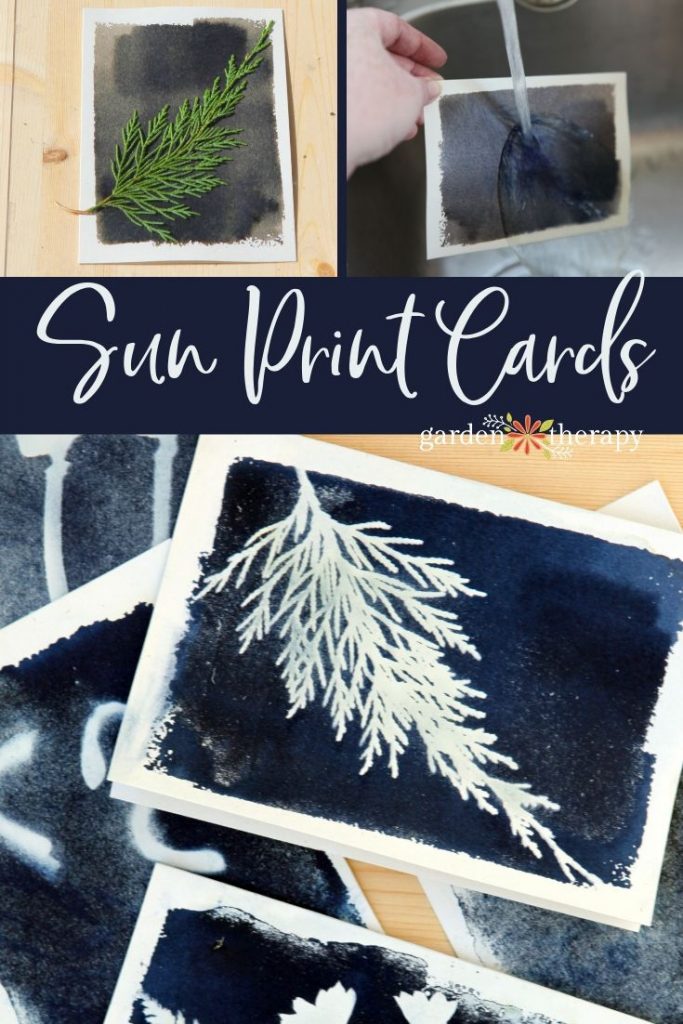Cyanotype is a historical method of making prints using the power of the sun. It’s a super fun craft to do on a sunny afternoon, and allows you to create beautiful prints courtesy of what’s growing in your garden. Here’s how you can make your own sun print cards!
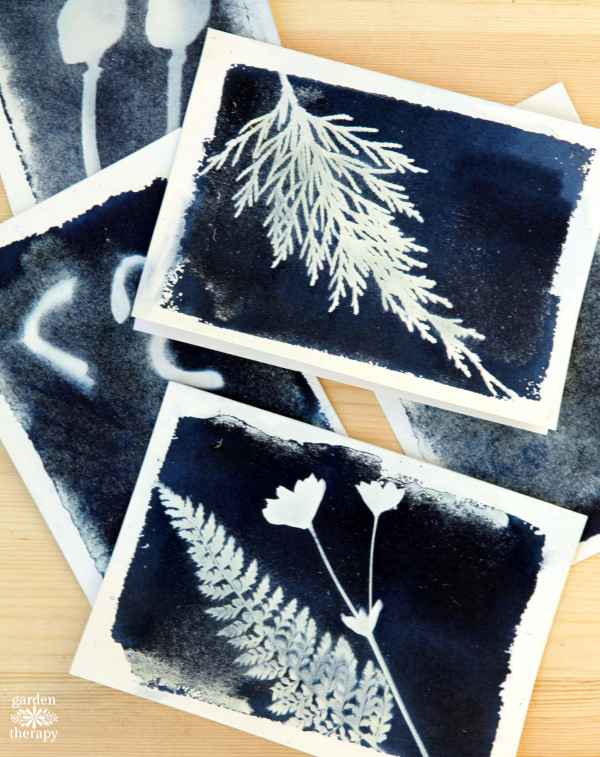
There are many ways to collect beauty from the garden and preserve it, but one of my favourites is to create greeting cards using a historic photographic method, cyanotype printing (you can read more about its history in this post).
I first used this method to create sun print napkins and was thrilled with the results. I was hooked on the possibilities of the interesting shapes in the garden that just needed to be immortalized.
Using some of the leftover cyanotype solution from the project, I made a bunch of sun print cards showcasing the various leaves in my garden. Let me show you how you can make your own!
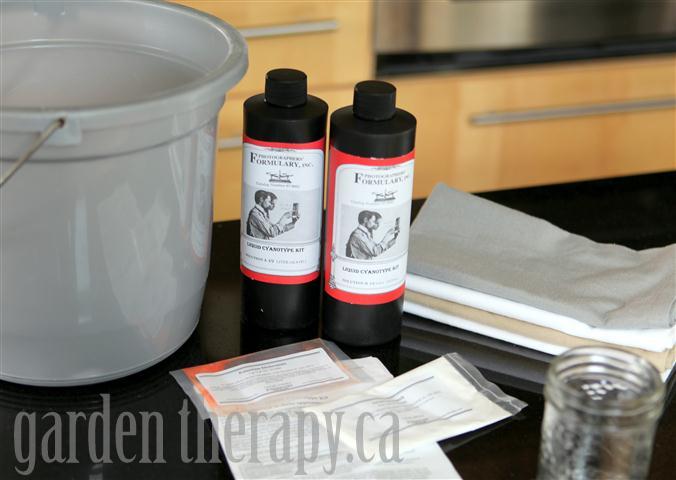
How to Make Sun Print Cards
Choose a sunny day to work on your cyanotype cards. It takes less than a half hour of sunlight to make the prints, but they also need some drying time so take this into account as well.
Materials
Make It
Read the instructions from your kit (a couple of times!) to learn the process. Since you’re working with chemicals, make sure everything is prepped and ready to go ahead of time. Wear gloves and lay out newspaper to protect your work surface.
Mix solution A and solution B as described in the instructions. Pour the mixed solution into the plastic bucket to make dipping the roller easy.
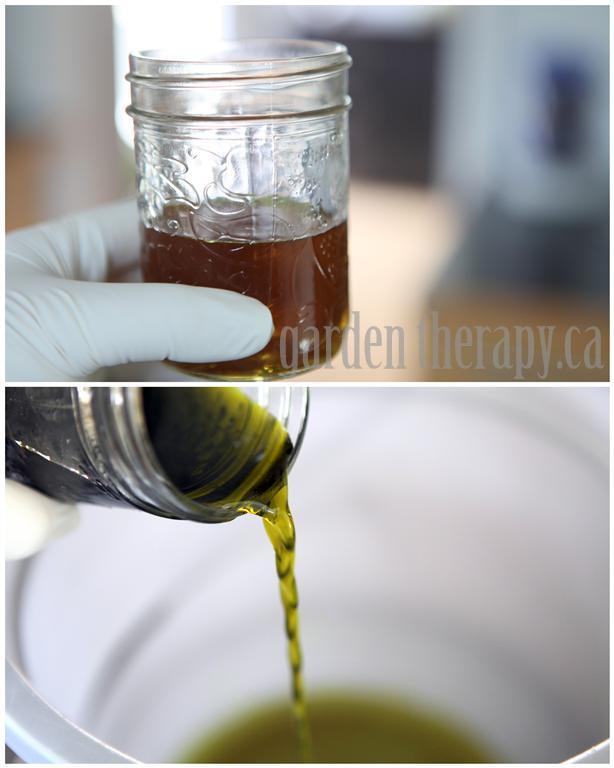
Use a small foam roller to make a rough rectangle on the cards. I like the edges uneven and natural-looking, like torn paper.
Pick out a few interestingly shaped flat things from the garden, a park, or a forest. Flat leaves with plenty of detail seem to work best. Those that are rounded will leave shadows and not give a crisp sun print.
Arrange the botanicals on prepared cards once the solution has dried. Note: Be sure to allow the solution to dry completely in the dark, as per the package instructions, as any light will begin the exposure process. Place a piece of glass over the cards and leaves and set it out in direct sunlight for 20 minutes undisturbed.
You can also buy sun print paper if you don’t want to deal with applying the chemicals. That’s on my list to try next.
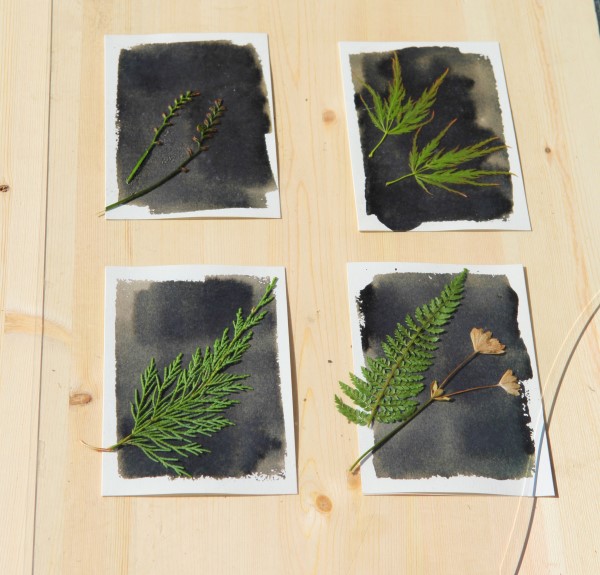
When the exposure time is up, run the print under water until it starts to develop.
The instructions say to wash for 5 minutes, but I found this lightened too much of the print. I also tried floating the whole card in a tub of water and didn’t like these results that were, again, too washed out.
There was a warning in the instructions that if you don’t wash the chemicals off well enough, your print will continue to be exposed. I did these cards a few weeks ago, and they are still just perfect, so I suppose I found the right balance. My experimentation led me to feel satisfied with the running water system.
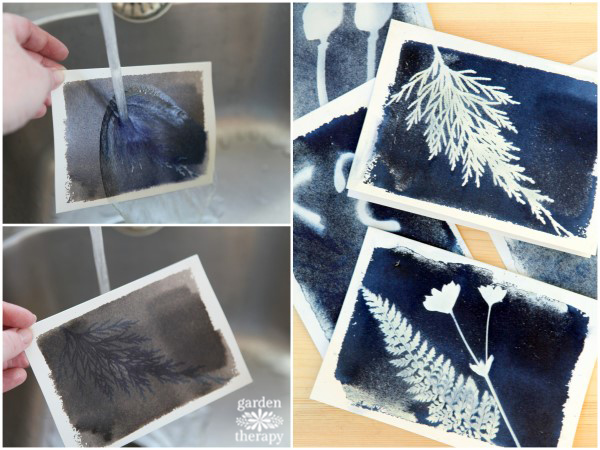
You don’t need to wash them until the unexposed area under the leaf is completely white, which will happen as it finishes developing and dries. Set out to dry until damp, then press between sheets of parchment in a phone book so that the card flattens out again.
I did a bunch of different types of organic materials I found in the garden, but the most successful were flat leaves or flowers. I did some poppy seed heads that cast a shadow and made the print look distorted. I’m sure you will have plenty to choose from, as I did, since nature is abundant.
Wash everything really well when finished. You, your bucket, and any spills should be cleaned with a large amount of warm water.
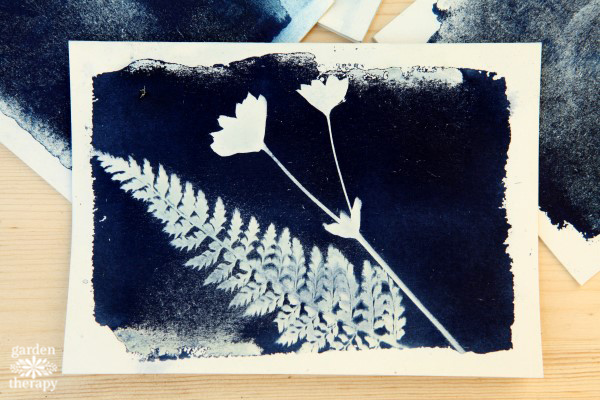
Cyanotype Cards FAQ
I used cardstock for mine. Printer paper will be too thin since it needs to be washed under water, but the cardstock was just the right thickness and smoothness.
These prints will likely fade a bit faster than other ink prints. However, this fading will occur over time. Mine have held their vibrancy for months!
More Ways to Preserve the Garden
A city girl who learned to garden and it changed everything. Author, artist, Master Gardener. Better living through plants.


